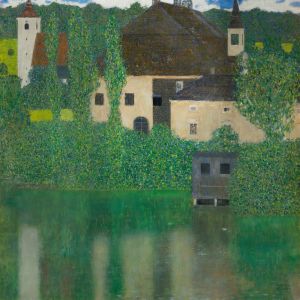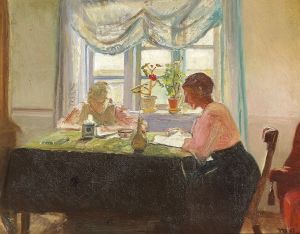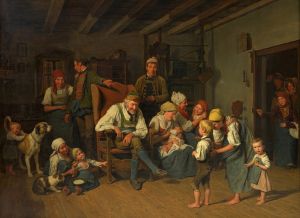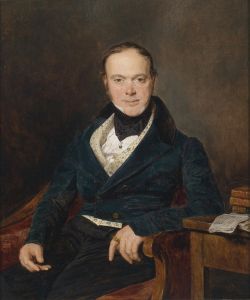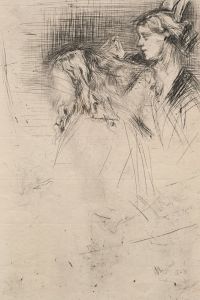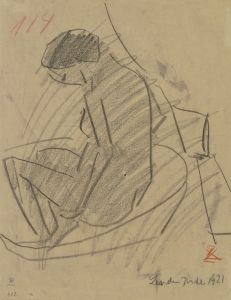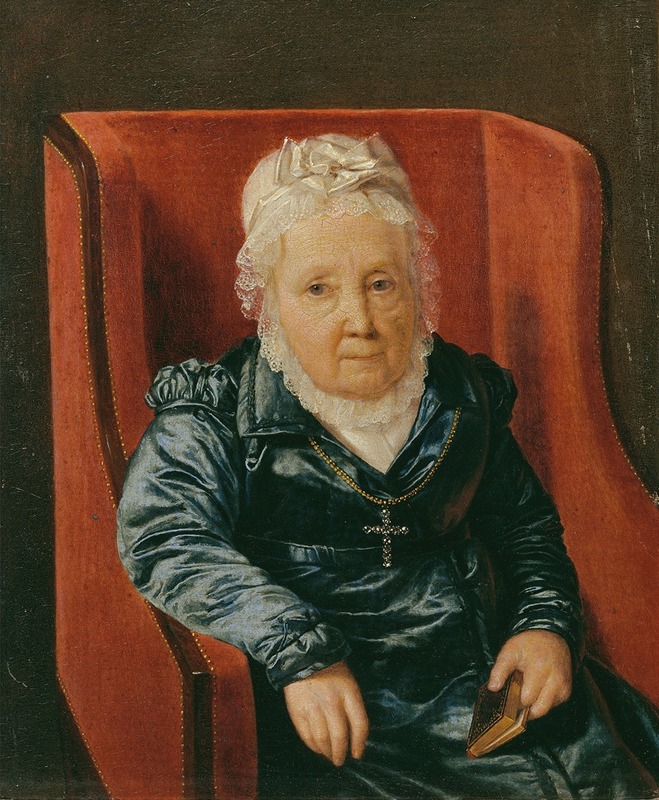
Rosina Wieser im Lehnstuhl
A hand-painted replica of Ferdinand Georg Waldmüller’s masterpiece Rosina Wieser im Lehnstuhl, meticulously crafted by professional artists to capture the true essence of the original. Each piece is created with museum-quality canvas and rare mineral pigments, carefully painted by experienced artists with delicate brushstrokes and rich, layered colors to perfectly recreate the texture of the original artwork. Unlike machine-printed reproductions, this hand-painted version brings the painting to life, infused with the artist’s emotions and skill in every stroke. Whether for personal collection or home decoration, it instantly elevates the artistic atmosphere of any space.
"Rosina Wieser im Lehnstuhl" (Rosina Wieser in an Armchair) is a painting by the Austrian artist Ferdinand Georg Waldmüller, created in 1853. Waldmüller, born in 1793 and deceased in 1865, is renowned for his detailed and realistic portrayal of everyday life, landscapes, and portraits, making him one of the most significant artists of the Biedermeier period in Austria.
The painting depicts Rosina Wieser, a woman seated in an armchair, captured with meticulous attention to detail and a keen sense of realism. Waldmüller's ability to render textures, light, and the subtleties of human expression is evident in this work. The subject, Rosina Wieser, is portrayed with a serene and contemplative demeanor, reflecting the artist's skill in capturing the inner life of his subjects.
Waldmüller's technique in "Rosina Wieser im Lehnstuhl" exemplifies his mastery of oil painting. The use of light and shadow, combined with his precise brushwork, brings a lifelike quality to the painting. The textures of the fabrics, the softness of the skin, and the intricate details of the surroundings are rendered with exceptional clarity. This attention to detail is characteristic of Waldmüller's work, which often focused on the beauty and simplicity of everyday moments.
The composition of the painting is balanced and harmonious, with Rosina Wieser positioned centrally, drawing the viewer's attention directly to her. The background is kept relatively simple, ensuring that the focus remains on the subject. This approach is typical of Waldmüller's portraits, where the emphasis is placed on the individual rather than the setting.
"Rosina Wieser im Lehnstuhl" is a testament to Waldmüller's dedication to realism and his ability to convey the dignity and grace of his subjects. His work is often associated with the Biedermeier period, a time of relative peace and prosperity in Central Europe, which saw a focus on domesticity and the depiction of middle-class life. Waldmüller's paintings from this period reflect these themes, celebrating the quiet beauty of everyday existence.
The painting is part of Waldmüller's extensive body of work, which includes numerous portraits, genre scenes, and landscapes. His contributions to art were recognized during his lifetime, and he held several prestigious positions, including a professorship at the Academy of Fine Arts in Vienna. Waldmüller's influence extended beyond his own work, as he played a significant role in the development of 19th-century Austrian art.
Today, "Rosina Wieser im Lehnstuhl" is appreciated for its artistic merit and historical significance. It offers insight into the cultural and social context of the Biedermeier period, as well as Waldmüller's artistic vision and technical prowess. The painting continues to be studied and admired by art historians and enthusiasts, contributing to the enduring legacy of Ferdinand Georg Waldmüller as a master of realism and portraiture.





